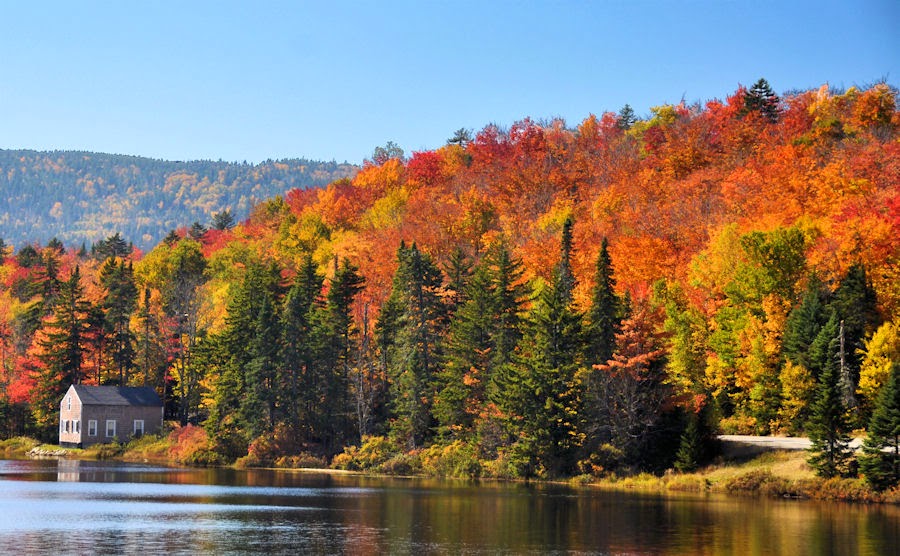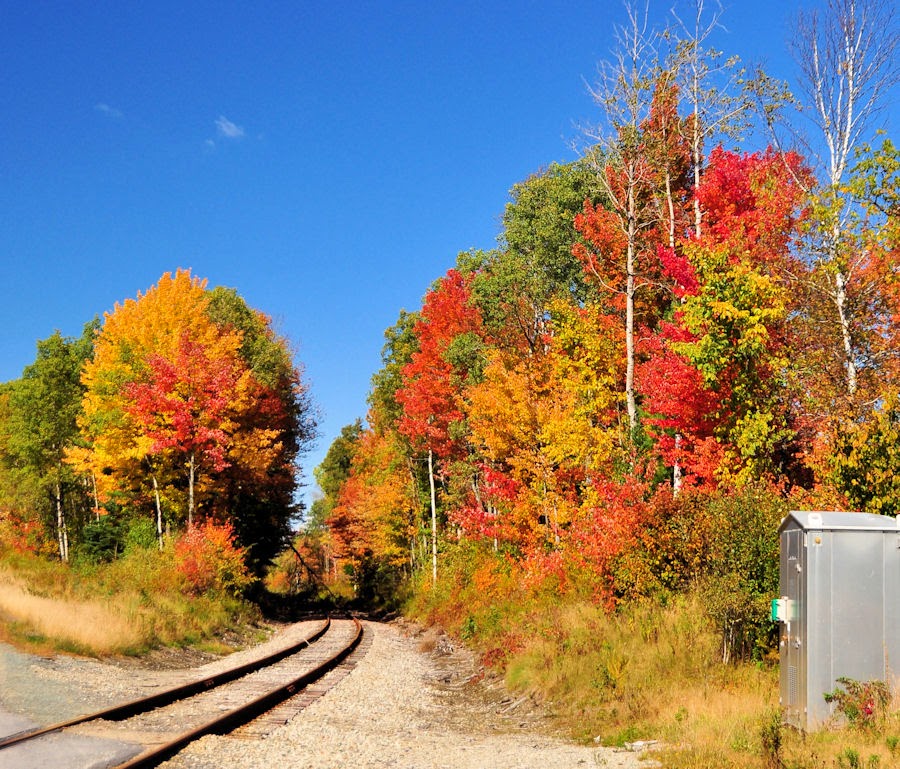 |
| Picture not taken in So. Cal. |
As you all know,
those of us from
Southern California don’t have 4 seasons. We just get hot,
warm, dry and (occasionally) rainy. My experience with leaf
color change is based on the sycamore trees we had in Redlands.
Sometime in November they started changing color and occasionally
would show reds, oranges and yellows. The few other trees that
dropped their leaves just turned brown. The rest stayed green all
year. The oaks dropped their leaves on an ongoing basis and were
replaced by new leaves. In my entire life I have never seen what we are
classically taught is "autumn". So this year, with plans to visit New
England, we decided to stay through the fall to watch the leaves
change colors. And boy, were we rewarded.
I decided we should stay at least for 2
weeks in the “far north” in order to actually watch the colors
change. Since we stayed for a week in northern New Hampshire during
mid-summer I thought that returning to that area would give us a good
comparison. The campground owners at Timberland, near Gorham, NH,
were helpful in that they
 |
| Balsams Grand Resort Hotel in July and in September. A good comparison. |
gave me the dates during the end of
September when the leaves usually change colors and provided maps of
drives we could take to go leaf peeping. Leaf peepers, at least in
Vermont and New Hampshire, is apparently what the locals (somewhat derisively) call the tourists who go
driving all over creation gaping slack jawed at tree activity that they take entirely for granted.
 |
| How do they know when to do this? |
So, this experience being new to us, I
wanted to know how the trees know when to change their colors so I
could predict where we should go. Obviously, when the days get
shorter the leaves begin to turn. But from my reading and planning I
discovered that I couldn’t know exactly where we should be at a
given time. Where and when the best colors can be seen varies from
year to year. In some years the colors are better than others.
Usually the leaf changing begins in the north and proceeds to the
south and the higher elevations show the changes before lower
elevations, but it isn’t that simple. There are obviously other
factors involved.
As far as the scientists know, the
other factors include temperature, rainfall, and nutrient supply.
Also the timing of the color change can depend on the species of
tree. The vividness of the colors can depend upon the temperature
and moisture. As autumn approaches a succession of warm, sunny days
and crisp but not freezing nights may result in the most spectacular
color displays.
 |
| Surprise... the colors were there all along. |
The US Forest Service discussion
states, “As days grow shorter, and nights grow longer and cooler,
biochemical processes in the leaf begin to paint the landscape with
Nature's autumn palette.” As night length increases and the
temperature drops in the fall, the production of chlorophyll slows
and then stops and eventually all the chlorophyll is destroyed. The
carotenoids (yellow, orange and brown colors) and anthocyanins (reds
& purples) that are present in the leaf are then unmasked and
show their colors. “Certain colors are characteristic of
particular species. Oaks turn red, brown, or russet; hickories,
golden bronze; aspen and yellow-poplar, golden yellow; dogwood,
purplish red; beech, light tan; and sourwood and black tupelo,
crimson. Maples differ species by species-red maple turns brilliant
scarlet; sugar maple, orange-red; and black maple, glowing yellow.”
So as you can see
our experience in New England was grand, but as we traveled south,
the changes were less spectacular. By the time we hit Gettysburg,
some trees hadn’t changed yet and some leaves had quickly turned
brown and dropped. This trend continued on south through Shenandoah
National Park. We spent a few days visiting Roger's former
receptionist in Tennessee and the colors around Johnson City were
quite nice but as we moved south into the Carolinas there was less
and less Autumn change.
Still, we were quite pleased overall
with our experience of the Fall foliage. I always thought someone
was kidding me as I cut out brightly colored construction paper
leaves in school. I could clearly see outside that the only realistic color
choices were green and brown. Now, after only 60 years, I finally
know what people are talking about when they gush about the Fall
colors.
BONUS PICTURES
Autumn in New Hampshire



















































